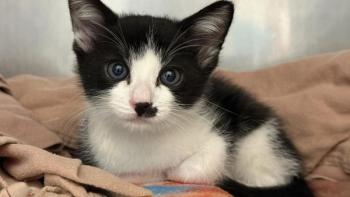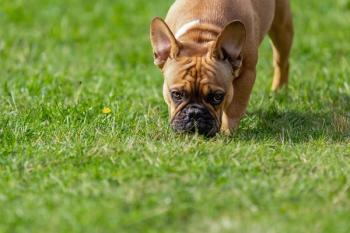
- dvm360 March 2020
- Volume 51
- Issue 3
The latest surgical options for brachycephalic obstructive airway syndrome
Brachy breeds are as popular as ever with pet owners, and as a result, veterinarians continue to see patients with respiratory aberrations associated with BOAS. A board-certified surgeon offers the latest options to treat these conditions in dogs.
Lightfield Studios/stock.adobe.comIf you've ever sat in a room with an English bulldog or a pug, you know exactly what a dog with brachycephalic obstructive airway syndrome (BOAS) sounds like. And as a veterinary professional, you can probably recognize the sound of BOAS before you even see the dog itself.
The components of this syndrome (stenotic nares, elongated soft palate, everted laryngeal saccules, laryngeal collapse and hypoplastic trachea) can occur independently or in combination with one another. The snoring, snorting and other breathing abnormalities can be so severe that some dogs require emergency surgery. Nevertheless, pet owners don't always understand the significance of these respiratory aberrations.
According to Kevin Benjamino, DVM, DACVS, with MedVet in Columbus, Ohio, even owners who notice the signs may
Dr. Benjamino reviewed important diagnostic and treatment considerations for dogs with BOAS in a recent session at Fetch dvm360 veterinary conference.
Overall presentation and diagnosis
Stenotic nares and elongated soft palate are primary conformational changes, but the other components of BOAS (everted laryngeal saccules, laryngeal collapse and hypoplastic trachea) tend to occur secondarily. For example, everted laryngeal saccules usually develop when chronic difficulty in passage of air into the nasopharynx and oropharynx causes negative pressure. “Normally, the saccules should be positioned at 4:00 and 8:00, adjacent to the vocal folds, just outside the airway. But eversion can make them obstruct the airway,” Dr. Benjamino says.
Common signs of BOAS include stridor, snoring and exercise intolerance. Potential triggers like hot weather, exertion and obesity exacerbate the condition. Dogs with BOAS are also predisposed to aspiration pneumonia and gastrointestinal (GI) signs such as regurgitation and vomiting. Severely affected pets may develop apnea, syncope, cyanosis and pronounced respiratory distress-presentations that are more likely to require emergency intervention.
Physical exam findings include referred upper airway noise during thoracic auscultation, stridor and visually narrowed nares. During physical examination, it's important to investigate other differentials, such as neoplasia, laryngeal paralysis and cardiac disease.
“Oral exam under sedation is very helpful,” Dr. Benjamino advises. Diagnostic objectives include determining the position of the soft palate, checking for masses or redundant pharyngeal tissue, evaluating the laryngeal structures and assessing tonsillar enlargement. Also performed under sedation, endoscopy facilitates evaluation of the pharynx and upper airway, as well as the upper gastrointestinal tract for dogs with vomiting and regurgitation.
Routine bloodwork (complete blood count and serum chemistry profile) and urinalysis are helpful, as well as blood gas analysis, to assess the pet's overall health.
Hypoplastic trachea can be identified on radiographs in some cases. However, Dr. Benjamino likes to rule out aspiration pneumonia before sedating a pet for surgery. In an older patient, it's also important to look for heart enlargement and signs of lower airway disease.
Once a diagnosis is made, it's time to consider medical and surgical options. Medical options are limited but include weight loss, controlling allergies, keeping the pet in a cool environment, avoiding neck leads and potentially using GI protectants if regurgitation is an issue. Moderately to severely affected pets are more likely to need surgery.
Surgical options
Dr. Benjamino urges clinicians to discuss surgical options with owners early, before secondary issues worsen the dog's overall condition. “If you intervene when these dogs are six to twelve months old, before there's a (chronic) problem, your success rate is better. There are certain problems that we just can't change surgically,” he says, noting that although hypoplastic trachea isn't surgically addressed, most of the other conditions are.
Stenotic nares. Stenotic nares usually respond well to wedge resection of the excessive tissue. “The laser works very well for this, but it does leave a bit of a scar,” Dr. Benjamino says, and recommends being sure to resect enough of the alar folds to correct the stenosis. Wedge resection is normally associated with a low rate of complications.
Elongated soft palate. Dr. Benjamino says, “An estimated 50% of brachycephalic dogs have elongated soft palates. Normally, the tip of the epiglottis should just touch the caudal edge of the soft palate. But in some dogs with this problem, the soft palate extends 1 to 2 cm past where it should.”
Redundant soft palate tissue can be safely resected, but removing too much can create a communication between the oropharynx and nasopharynx. Dr. Benjamino recommends using the tonsillar crypts as a landmark. “When I shorten the soft palate, I cut right around the edges of the caudal portion of the tonsils,” he says.
Metzenbaum scissors or a scalpel can be used for the resection, although some clinicians use a laser or Ligasure (Medtronic). Dr. Benjamino notes that although Ligasure and laser surgery may cause less bleeding, other potential postoperative complications (e.g. granulation tissue and inflammation) are likely the same as with traditional scalpel surgery.
Everted laryngeal saccules. Dr. Benjamino admits that there's controversy about when to resect laryngeal saccules. “This is scary for some people, but if the saccules are in the airway, surgery is necessary,” he says, adding that bleeding is usually minimal. During the procedure, the pet must be briefly extubated. Then the saccule can be grasped using forceps and removed using Metzenbaum scissors, taking care to avoid trauma to the vocal cords. Bleeding can usually be controlled using gauze and direct pressure.
Laryngeal collapse. Laryngeal collapse occurs when the laryngeal cartilages weaken and begin to fold in on each other as a result of chronically increased pressure. It's a secondary change that is more likely to occur in older patients, although younger pets can also be affected. Dr. Benjamino describes three grades of laryngeal collapse:
-Grade 1: the laryngeal saccules evert and narrow the pharyngeal lumen.
-Grade 2: Grade I collapse is accompanied by inward folding of the cuneiform processes and failure of the cuneiform processes to abduct during inspiration.
-Grade 3: Cuneiform and corniculate processes fold down or inwardly on each other during inspiration. “Dogs with severe grade 3 collapse may need a permanent tracheostomy,” Dr. Benjamino warns.
Surgical correction is more difficult in dogs with grade 2 or 3 laryngeal collapse. Surgical options include laryngeal tieback, but success rate can vary. Some dogs benefit from a permanent tracheostomy, which bypasses the upper airway entirely.
Postoperative care recommendations following correction of BOAS include soft food for approximately 14 days, gastrointestinal protectants (omeprazole or pantoprazole), glucocorticoids for inflammation, and acepromazine and butorphanol if sedation is needed.
Dr. Todd-Jenkins received her VMD degree from the University of Pennsylvania School of Veterinary Medicine. She is a medical writer and has remained in clinical practice for over 20 years. She is a member of the American Medical Writers Association and One Health Initiative.
Articles in this issue
about 5 years ago
Veterinary practice management software optionsover 5 years ago
Pet insurer: Records show no sign of human coronavirus in petsover 5 years ago
Combatting the ‘loneliness epidemic,’ one pet at a timeover 5 years ago
Antibiotics in canine GI disease: when to use and when to ditchover 5 years ago
Western Veterinary Conference announces new nameover 5 years ago
You, he, she and me equals usNewsletter
From exam room tips to practice management insights, get trusted veterinary news delivered straight to your inbox—subscribe to dvm360.






